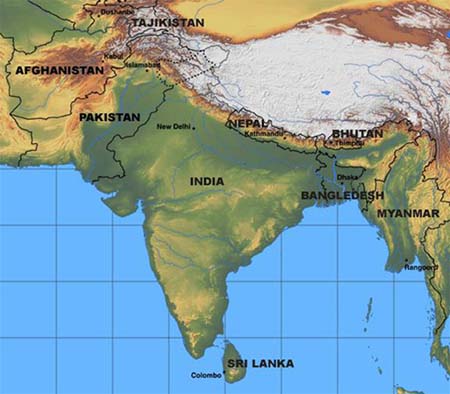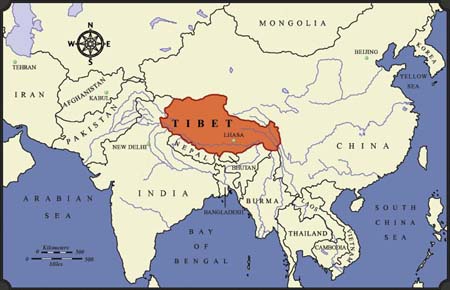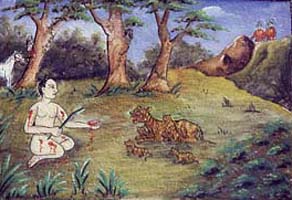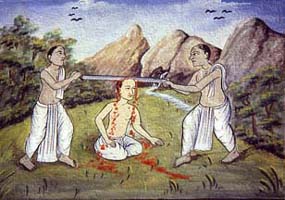Name Tim McPartlin
Department Algonquin H.S. Northboro, MA
Subtitle Modern Tibet
Home
Tibet before 1950
Geography:
Students will be given a blank map and shown a series of overheads to
record the political borders, major terrain features, and the extent of
the "Tibetan Cultural Zone."

Elevation Map of Asia

Political Map of Asia

Greater Tibetan Cultural Zone
Watch the movie Himalaya by Eric Valli to get a sense of how people adapt to the mountains by engaging in herding, trade, and small-scale agriculture.
Click on picture or link for the companion website for
the film Himalya
http://www.kino.com/himalaya/
Religion:
Students will gain an understanding of Buddhism by reading Jataka tales
on the life of the Buddha. Students will get into small groups and illustrate
a comic book to convey the moral precepts of Buddhism as revealed in the
Jataka takes.
 |
 |
Jataka tales courtesy of the Himalayan Cultures Institute
An electronic version of some of the tales can be found at http://www.mainlesson.com/display.php3?author=babbitt&book=morejataka&story=_contents
Culture:
Students will read a brief excerpt from the Autobiography
of Tashi Tsering to understand that life in Tibet prior to the Chinese
invasion in 1950 was not a "Shangri-la" for the majority of
the Tibetan peasants. Students will also read an excerpt about the effects
of the Cultural Revolution on Tibet
 |
 |
| A young member of the Red Guard who took up Mao's call to smash the Four Olds: old ideas, old thoughts, old customs, and old habits. | Mao, facing criticism for the failure of the Great Leap Forward, turned to the youth of China to smash his political rivals and the vestiges of "feudal" society. |
